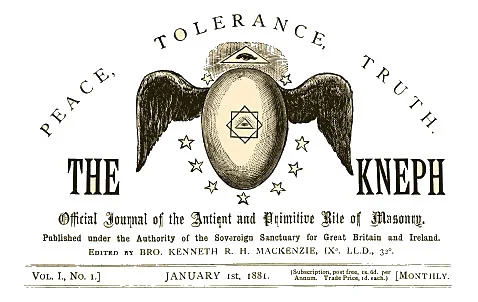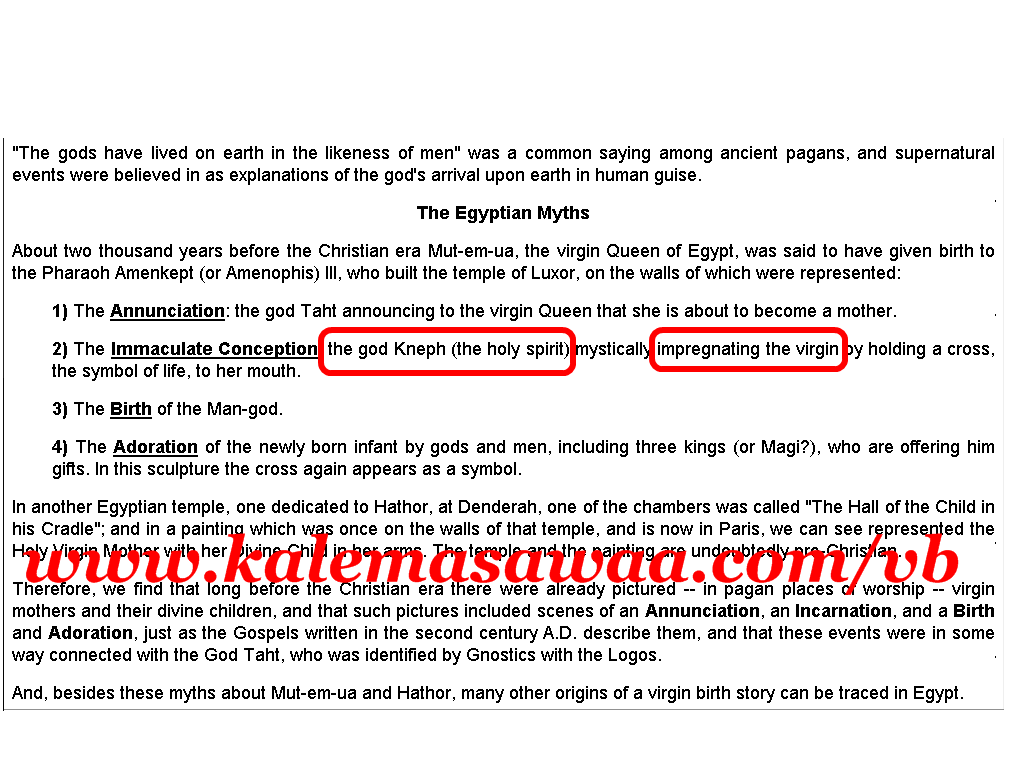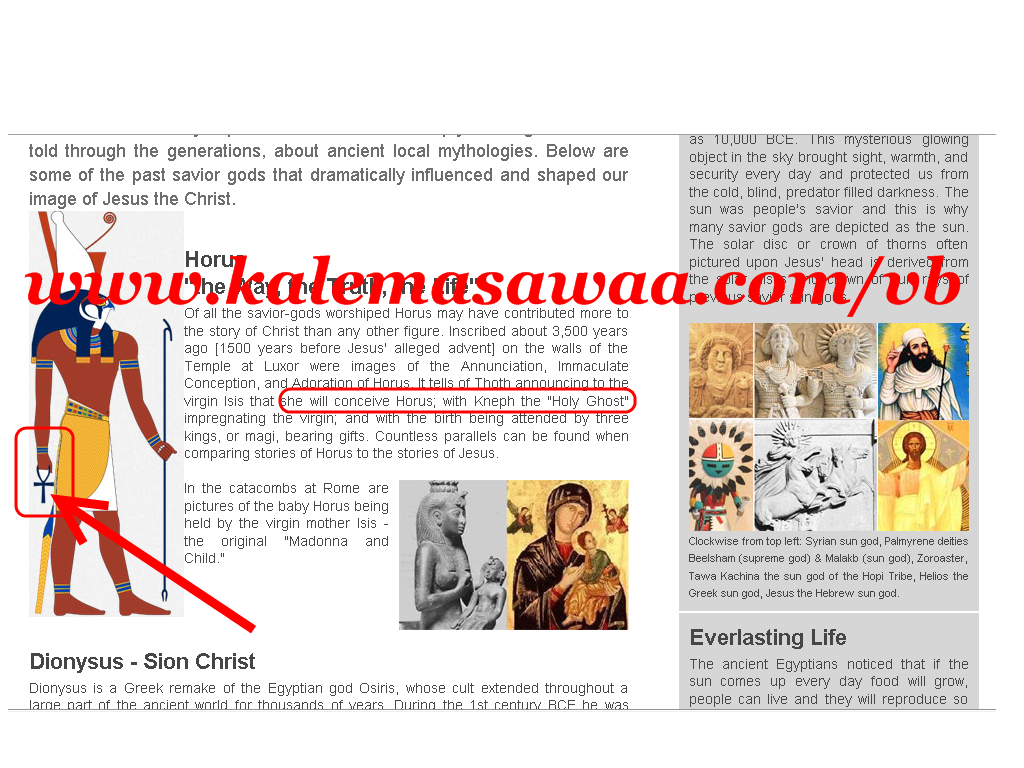The Pagan Origins of Christianity: The Holy Spirit
have always repeated in their prayers the following polytheistic phrase:
“In the name of the Father, the Son, and the Holy Spirit , one God ******.”
As the phrase makes clear - despite their deception and trickery - they believe in three gods, not one:
- The Father is God.
- The Son is God.
- The Holy Spirit is God. What Christians
do not know is that by repeating their aforementioned polytheistic phrase, they are glorifying and magnifying a pagan god and holy spirit whose names are many and differ from one civilization to another, but its most famous name is the Pharaonic pagan Holy Spirit THE KNEPH
Image of the Holy Spirit THE KNEPH (in the form of a bird) Image of the Holy Spirit as Christians imagine Him : Image of the Holy Spirit THE KNEPH Masonic:


THE KNEPH
The pagan Holy Spirit the kneph was worshipped by the Greeks under the name Chnouphis , and from here the doctrine of the Trinity and the concept of the Immaculate Conception were derived.
Click here The pagan Holy
Spirit the kneph was worshipped by the Africans and the ancient Pharaohs, and was imported and recycled to fit the pagan Trinity belief that the mother of God Jesus (Mary/Mother of Light) was impregnated by the Holy Spirit :
Source: Here is
the similarity between the story of the birth of Jesus of Nazareth and the birth of the pagan Egyptian god Horus. We note the presence of the Holy Spirit, the Kneph :
Source: Here
and here is the picture Subject of the quote: Source of the picture here

The goddess Neith was given the good news of the birth of the King of Heaven, Horus. She was fertilized by the Holy Spirit , Kneph, through the pharaonic cross, the ankh.

Image source : Here is
further evidence that the concept of the annunciation of the birth of the divine child and the concept of the immaculate conception were prevalent among the ancient Pharaohs.

Source: here

The source is here
. In this clip, Bishop Youannis confirms that the Immaculate Conception has Pharaonic origins, from minute 3:15 to 3:45.
“In the name of the Father, the Son, and the Holy Spirit , one God ******.”
As the phrase makes clear - despite their deception and trickery - they believe in three gods, not one:
- The Father is God.
- The Son is God.
- The Holy Spirit is God. What Christians
do not know is that by repeating their aforementioned polytheistic phrase, they are glorifying and magnifying a pagan god and holy spirit whose names are many and differ from one civilization to another, but its most famous name is the Pharaonic pagan Holy Spirit THE KNEPH
Image of the Holy Spirit THE KNEPH (in the form of a bird) Image of the Holy Spirit as Christians imagine Him : Image of the Holy Spirit THE KNEPH Masonic:
THE KNEPH
The pagan Holy Spirit the kneph was worshipped by the Greeks under the name Chnouphis , and from here the doctrine of the Trinity and the concept of the Immaculate Conception were derived.
Click here The pagan Holy
Spirit the kneph was worshipped by the Africans and the ancient Pharaohs, and was imported and recycled to fit the pagan Trinity belief that the mother of God Jesus (Mary/Mother of Light) was impregnated by the Holy Spirit :
|
Source: Here is
the similarity between the story of the birth of Jesus of Nazareth and the birth of the pagan Egyptian god Horus. We note the presence of the Holy Spirit, the Kneph :
|
Source: Here
and here is the picture Subject of the quote: Source of the picture here

|
The goddess Neith was given the good news of the birth of the King of Heaven, Horus. She was fertilized by the Holy Spirit , Kneph, through the pharaonic cross, the ankh.
| This image is in another size. Click here to view the image in its correct form. The image dimensions are 650x186. |

Image source : Here is
further evidence that the concept of the annunciation of the birth of the divine child and the concept of the immaculate conception were prevalent among the ancient Pharaohs.
| This image is in another size. Click here to view the image in its correct form. The image dimensions are 1024x768. |

Source: here
| This image is in another size. Click here to view the image in its correct form. The image dimensions are 1024x768. |

The source is here
. In this clip, Bishop Youannis confirms that the Immaculate Conception has Pharaonic origins, from minute 3:15 to 3:45.






Comments
Post a Comment